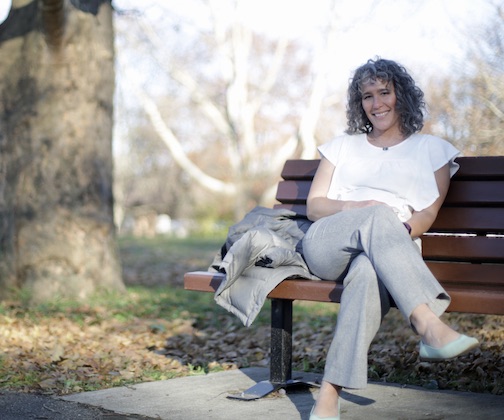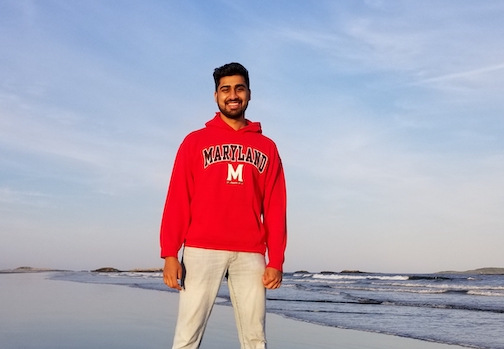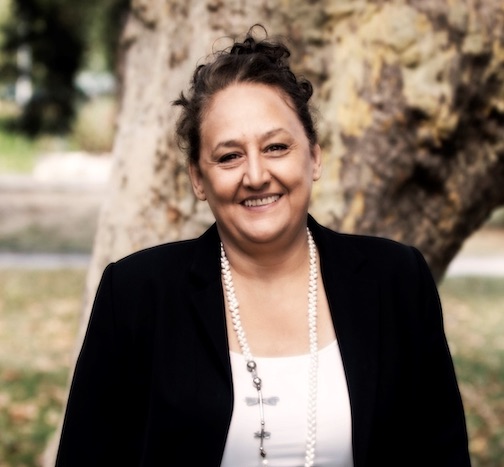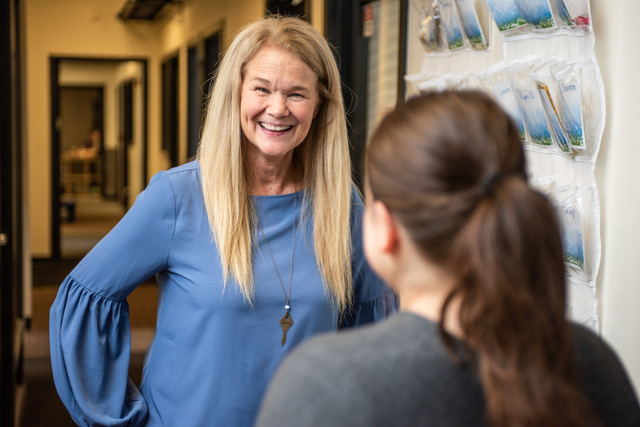Why and how did you choose to create Mary’s place?
Mary’s Place was established in 1999 as a day center for homeless women. Women were walking from service to service, carrying their home on their backs trying to get their physical needs met. They were waiting in line for hours for meals, laundry, medical care, benefits, to use a free phone, or to apply for housing and employment. With a grant from the Boeing Employee’s Community Fund and the passion of a dedicated board and staff, Mary’s Place opened its doors. The women developed the structure and daily schedule that remains in effect today: two meals a day, hygiene facilities, showers, laundry, medical care, support groups and ample resources for housing, employment, and benefits.
In 2010 the impacts of the nationwide recession were still being felt and at Mary’s Place, we were seeing a surge of homeless women with children. It was heartbreaking to turn these families away at the end of each day to hide in restrooms, sleep in a car, or ride the bus all night to stay safe and warm. Mary’s Place turned to the faith community for help and together opened their first crisis response night shelter for women and children, a shelter that moved between 20 participating congregations, one of the few places where a woman with children could find a safe place to sleep at night.
Soon after, our first emergency family shelter opened in a building awaiting development in downtown Seattle, providing night shelter for 48 women and children. Mary’s Place went on to find several other vacant buildings awaiting other uses, moved in and created temporary emergency family shelters—18 in total over the years!
What are the different neighborhoods you work with in the Seattle area?
Mary’s Place has 8 shelter locations in King County: downtown Seattle, Madrona, Burien, Kenmore, White Center, Shoreline, South Lake Union, and North Seattle – providing 600 beds in total each night. If also have a single-family home in Auburn, and our Women’s Day Center in downtown Seattle.
What are the languages you hear every day and the cultures you’ve learned about?
Guests at Mary’s Place come from all over the world and speak many languages. Nearly 30% of our guests are immigrants and refugees, many fleeing violence and oppression in their home countries. One of our largest populations is East African. Mary’s Place values all traditions and cultures and we recognize them in celebrations, meal preparation, and family sharing.
What surprises you about your work?
We are surprised and inspired every day by the strength and courage of the women and families who walk through our doors. People who hit a bump in the road and had nowhere to turn, no safety net; who experienced fear, heartbreak, and humiliation. Parents who have sacrificed so much for their children, who are working hard to address barriers, who have two, sometimes three jobs to try to provide a safe, stable home for their families.
What are you most proud of about your work?
Thanks to the support of our community and generous partners, we have been able to pilot some innovative programs, national best practices, here in King County – with great success. Programs like Diversion. Diversion is a promising approach that offers quick solutions to resolve a family’s crisis, assisting them to transition from homelessness to housing. It relies on creative problem solving to reconnect people to the support systems they have, and provides flexible financial assistance when needed to realize a safe housing solution. Diversion centers the needs of each unique family and capitalizes on their strengths, allowing them to be in charge of identifying what they want and how to get there. Families are acknowledged as the experts on their own lives, offering the respect and dignity that many families are seeking. In 2018, Mary’s Place helped 267 families find stable housing through our diversion program.
It’s our hope that the work that we are able to do will become a model for our community, and other communities around the nation.

How does trust play a role in your daily routine?
We trust our families to know what’s best for them, what they need, and how to get it. We are here to support them in getting what they need.
What is the most constraining aspect of your work, or what are you most limited by?
We have the ability to ensure that no child sleeps outside in our community, and we are getting closer to achieving that goal. Like most nonprofits, we are limited only by funding to scale operations.
With such a variety of people and beliefs, how do you navigate different aspects of health at Mary’s Place?
The Mary’s Place model is built on community partnerships. Partnerships for buildings to open shelter, with landlords to find housing, with organizations for tickets and experiences to share with our families, with funders to pilot innovative new techniques, and with local service providers to provide critical services like mental health, ESL, parenting education, cancer screenings, dental and vision visits, and so much more.
A new partnership that has improved our ability to address gaps in service for the large population of American Indian/Alaskan Native families experiencing homelessness in King County is with Chief Seattle Club, who bring an important cultural expertise to the shelter and services we can provide.
If you could establish a sister-city relationship in another country, where would it be?
The largest group of guests at Mary’s Place from another country are from Eritrea. It would be a gift to have a relationship with a shelter provider there.
What is the hardest thing you do, and the most gratifying thing?
The hardest thing that we do is, without a doubt, having to turn away families with children who are asking for help because we don’t have any available beds. It’s heartbreaking.
The most gratifying thing is to talk to a family who has found housing, is financially stable, and happy and healthy in their new home. It’s incredibly joyful!
What are your current struggles, and what are the top three needs that people reading this interview could help Mary’s Place with?
We have a housing crisis, a shortage of affordable housing. Do you know any landlords or property managers who would be willing to work with us to identify housing solutions for our families? Come spend time with our families. Help fill out housing applications, write resumes, do activities with the kids. Relationships bring hope, and change lives! 600 moms, dads, and kids drink a lot of milk! Providing food, heat, and qualified staff to run our successful and trauma-reducing programs requires financial support from our community.
What is your vision for the future of Mary’s Place?
Our vision is a community where all families have safety, stability, and housing. Our goal for Mary’s Place is that every family with children in crisis has a safe place to sleep, inside and together, while they access the resources and support they need to get back on their feet and look for that stable housing.
If there was one thing that could change or alter in every homeless person’s life what would it be...
That they could get the help and support they need to ride out whatever storm they are facing, before it blows them off course. Our families and our community would be so much stronger if we could prevent homelessness from happening in the first place.
More Stories from Kinnected

At times, it has been really frustrating to be a strategist and health communication professional and witness the lack of strategic planning and messaging that we have over the last two years.
-
3 years ago

"What many people miss is that emotional exhaustion among clinicians existed long before the pandemic."
-
4 years ago

"A lot of people argue whether technology is good for the future of humanity or bad. In my opinion, it is both - just as an herb could be a poison or a medicine."
-
4 years ago

